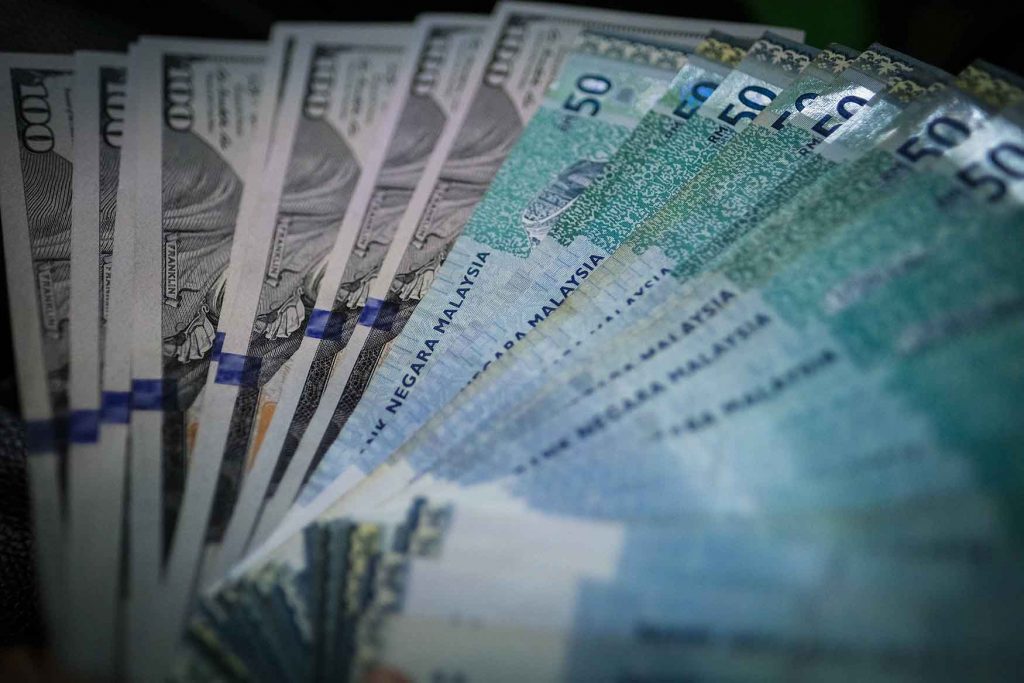
Source Center for Market Education
KUALA LUMPUR, Malaysia: After a short break, the Malaysian Ringgit (MYR) is again under stress and close to be exchanged at 4.8 against one American Dollar (USD). The Center for Market Education agrees with the general consensus that the resurgent weakness of the domestic currency is mainly due to external factors:
-Higher than expected American inflation data are expected to keep FED rates higher for a longer period, prolonging the interest rate differential between Malaysia and the US and thus favouring an outflow of capital toward the American markets;
-Prolonged geopolitical tensions, in particular in the Middle East, are supporting those currencies which are recognized as a more reliable reserve of value (in this case, the greenback).
“I believe also that entrepreneurial animal spirits in Southeast Asia usually tend to be more prudent than in other parts of the world, and therefore the general climate of uncertainty is keeping investors and entrepreneurs on a ‘wait-and-see’ approach for longer time”, added Dr Carmelo Ferlito, CME chief executive officer.
According to CME, Bank Negara Malaysia is acting in the right direction, trying to preserve a delicate balance between the price dynamics, the ringgit behaviour and the potential risks of a global economic slowdown. In particular, the following statements from the Malaysian central bank need to be supported:
1. As stated by Governor Abdul Rasheed Ghaffour, BNM continues to advocate for structural reforms which are critical to strengthen Malaysia’s growth prospects and encourage investments to provide more enduring support for the ringgit;
2. BNM is not considering capital controls or restrictions like those introduced during the Asian Financial Crisis, taking into account the potential costs and impact on the economy, as clarified by BNM Deputy Governor Adnan Zaylani Zahid.
CME believes that it is extremely positive to know that BNM will not introduce capital controls, because such a move would further discourage entrepreneurial ventures in the country. CME also strongly agrees with the primacy of structural reforms, rather than monetary policy, when acting domestically to support the currency by encouraging the awakening of entrepreneurial spirits. According to CME, those reforms need to encourage businesses by building a favourable ecosystem from the institutional, financial and fiscal perspectives.
Given the fact that the Ringgit is not the only Asian currency under stress (the Indonesian Rupiahs broke the psychological barrier of IDR 16,000 against the USD for the first time in four years), the Center for Market Education invites ASEAN central banks to a higher degree of cooperation for supporting the purchasing power of their citizens.
Given the institutional impossibility to adopt desirable solutions such as the return to the gold standard or introducing free competition among currencies within the national borders, CME suggests the following reforms:
-Working for the adoption of a unified ASEAN currency;
-Adopting an ASEAN unit of account based on a basket of many goods rather than just one.
As explained by Professor Jesus Huerta de Soto (University King Juan Carlos, Madrid, Spain), when different countries adopt the same currency, they lose the possibility of manipulating their local currency by placing it at the service of the political needs of the moment. In this sense, an ASEAN currency would act like the gold standard did in its day. In a nutshell, a unified currency would avoid individual states irresponsible behaviour. Furthermore, such a currency should aim at competing with the USD and the Euro as reputable reserve of value.
The second point, suggested, among others, by Warrant Coats (an economist formerly with the International Monetary Fund) and the late Leland B. Yeager (Auburn University, University of Virginia), implies, for the creation of the ASEAN currency, the separation of the unit of account and the medium of exchange, with the creation of a unit of account backed by a basket of many goods (instead of gold alone). All that is required is that bank money be redeemable for a marketable asset having a current market value equivalent to that of the unit of account basket.
Central bank new currency notes may be used as reserves (base money) for a competitive banking system. The unit of account (Coats called it Valun) would be defined as a specific amount of a large number of goods and services (in example, the consumer price index (CPI) basket). Money would be denominated in Valuns and a one-Valun bill (currency note) would be exchangeable at the central bank for one Valun’s worth of some other asset, such as treasury bills, that have a well-defined, market-determined value in terms of Valuns. This will increase the value stability of the new currency.
In conclusion, in the current moment of difficulties for emerging countries currencies, CME approves BNM calls for structural reforms and BNM position against capital controls. Furthermore, CME invites to a deeper cooperation among regional central banks to design a new monetary system with a unified currency, aiming at competing with the USD and the Euro. Such a currency should be based on a new commodity standard, adopting a unit of account based on a basket of many goods.








0 Comments
LEAVE A REPLY
Your email address will not be published